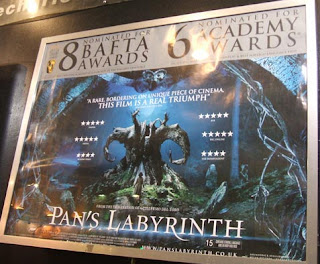
Tate Modern
25 May 2007
London
Those looking for a more challenging start to the bank holiday weekend could do worse than drop by Tate Modern over the next few days as it plays host to a series of multi-media events day and night.
Kicking off with a series of short films by the experimental filmmaker Maya Deren (1917-1961), accompanied by music from No Waver Ikue Mori, was a promising start. The setting was the towering Turbine Hall, turned into an al fresco, albeit indoors, screening, with the audience reclining on red cushions. One just needed a hamper and some Pimms to make an evening of it. and pretend it was Hampstead Heath, then.
The programme began 30 minutes late, which suited me, as public transport proved unreliable. Mori appeared behind her bank of computers and began playing to the darkened room. I was a bit confused as I thought she would be accompanying the films and as there was nothing on the screen above her, the effect was rather dampened. However, her performance proved to be the overture to the series, setting the tone with some blasts of discordant electronic noise, building up to a recognisable rhythm before subsiding.
She then left the stage and the films began. Deren's most famous film was also her first and it led off the programme. Meshes of the Afternoon (1943) remains avant-garde, a series of seemingly innocuous occurrences that conclude in tragedy. Deren's protagonist, portrayed by the filmmaker, repeatedly enters a room, sees objects on a table, cliimbs stairs and follows a nunlike figure with a mirror for a face. Each time, however, the situation is slightly skewed and she sees herself enacting the behavior. Keys turn to knives. The rules of gravity stop being applied and the woman ends up sitting in her chair dead. I scribbled in my notes: is it Surrealist? Deren rejected this label but her work does share attributes.
Next up was Meditation on Violence (1948), less complex in structure as it depicted Chao Li Chi performing Shaolin and Wutang movements. This was scored by Teiji Ito, as was Meshes, and the music and movements were well matched. Deren toyed with reverse shooting and freeze frame but I felt it went on a bit too long.
The Very Eye of Night (1959) was her last completed film and shows her interest in dance and animation as she shot ballet dancers in negative set against a backdrop of stars. It creates a lyrical effect but dragged by the end.
Mori returned to perform a live score for the remainder of the programme, which continued with fragments of Witch's Cradle (1943), an unfinished film featuring Marcel Duchamp, of all people. What remains shows a man being pursued by a piece of string, a woman with symbols drawn on her face and lots of strange architectural structures, apparently from Peggy Guggenheim's collection. Very puzzling, but also fascinating. Deren was decades ahead of her time in her use of shapes and movement.
At Land (1944) was my favourite of the night. Deren, now a familiar sight with her mop of curly hair and athletic frame, is washed up on a shore. She proceeds to climb up a piece of driftwood, emerging at a long table filled with men smoking cigars. As she crawls along the table, everyone appears oblivious to her presence. A feminist statement? I wondered. John Cage turns up in this but I am not sure which character he was, possibly the man playing chess at the end of the table. Deren follows an errant chess piece along a beach and then finds two women playing chess. After distracting them, she nicks the chess piece and then runs away. The women aren't credited but perhaps they are some of her famous friends.
The last two films are very much about movement. A Study in Choreography for the Camera (1945) does what it says on the tin, as Tally Beatty dances in a range of settings, from woodland to what looks like more Guggenheim settings. I recognised a heart-shaped chair from another film.
Ritual in Transfigured Time (1946), the closer, is intriguing. Deren appears with skeins of yarn, which are then wound by Rita Christiani while Anais Nin (!) glowers in the background. Christiani is then admitted by gatekeeper Nin to a room of the beautiful people, all dancing toward and around each other in choreographed movements. Deren and Christiani sometimes double for each other as they run away from a strange live statue. Gore Vidal also makes an appearance, and there is also a scene with three black-clad women dancing, echoing The Three Graces. I wondered if Deren were making a point about identity and the different sides of women or indeed about race as she is white and Christiani is a light-skinned black or mixed race woman. It would be quite daring for 1946.
Sadly, these ideas were not developed as her career was cut short. But she is a hugely undervalued figure in film. Mori's music, while decades later than the film, complemented it well, as she works in an experimental style, using electronics to create rhythm and soundscapes rather than recognisable melodies.
![Reblog this post [with Zemanta]](http://img.zemanta.com/reblog_e.png?x-id=850f6bf9-c0e6-4e8d-b402-cb898cfa407e)

![Reblog this post [with Zemanta]](http://img.zemanta.com/reblog_e.png?x-id=876ee294-93c3-43de-9462-42fa87cae4dd)

![Reblog this post [with Zemanta]](http://img.zemanta.com/reblog_e.png?x-id=2625e5b3-4910-4dfe-a05c-a8316be40fd6)

![Reblog this post [with Zemanta]](http://img.zemanta.com/reblog_e.png?x-id=bca4e369-e8ee-47dd-93e1-8ff65c5cfbf7)

![Reblog this post [with Zemanta]](http://img.zemanta.com/reblog_e.png?x-id=8bbf9761-f515-4993-91f9-059a8d4d9264)

![Reblog this post [with Zemanta]](http://img.zemanta.com/reblog_e.png?x-id=3faa28cb-6287-4267-b53c-d43da051d8d6)
